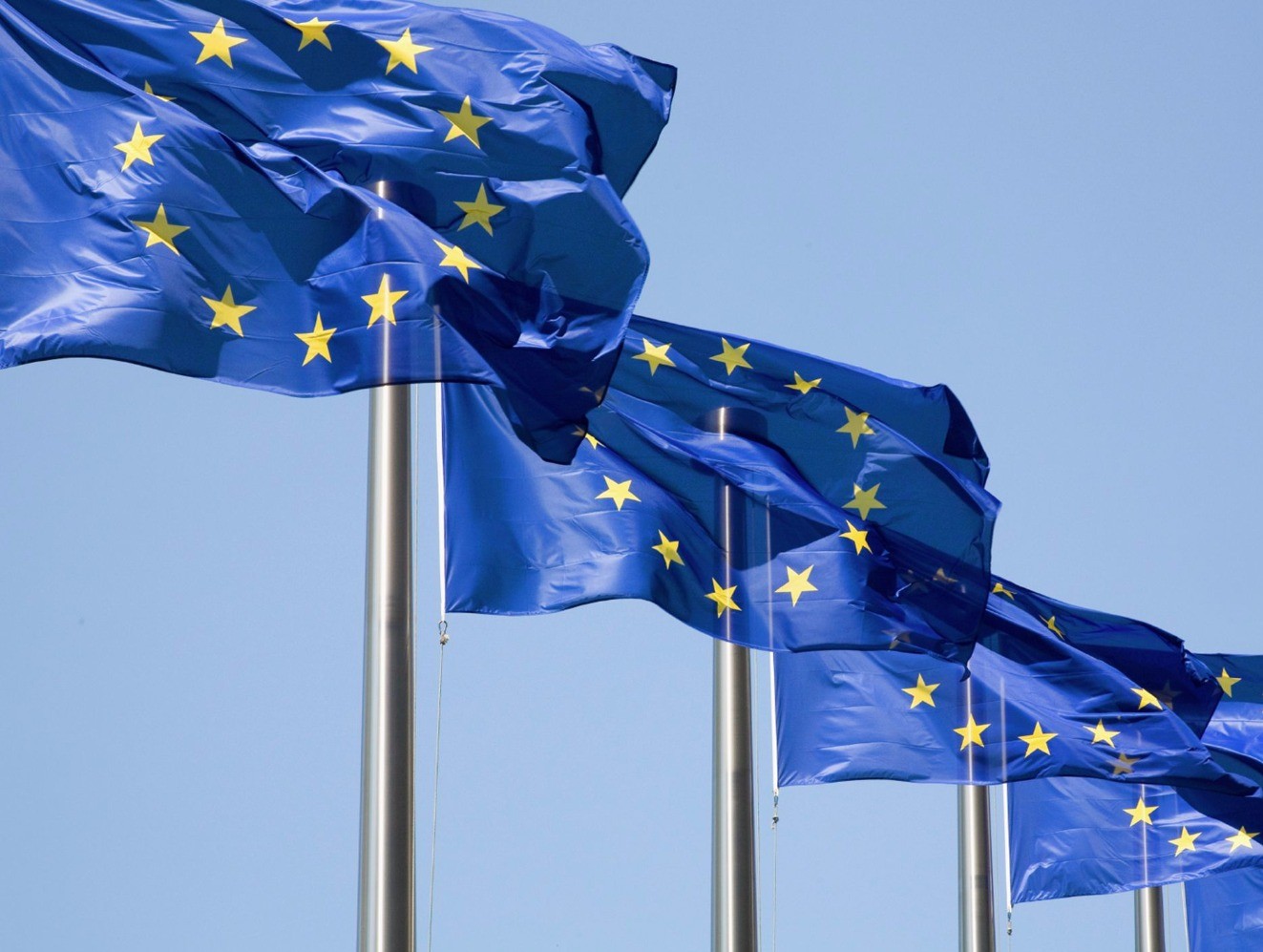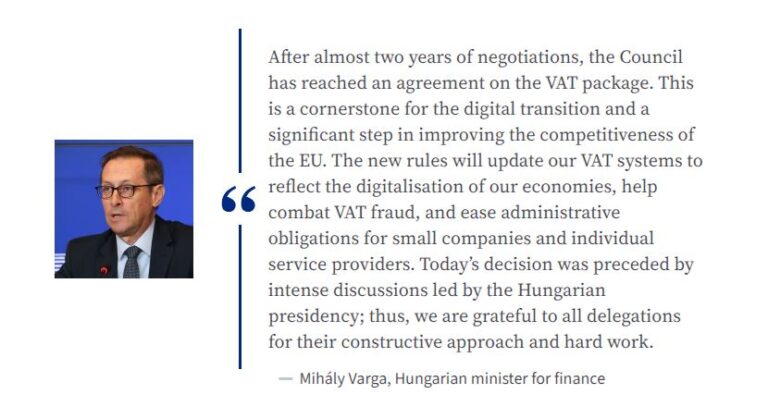EU overhauls VAT rules for the Digital Age

The European Union has made a significant stride in its ongoing efforts to modernise its value-added tax (VAT) system, with the European Council recently agreeing on a comprehensive legislative package under the “VAT in the Digital Age” (ViDA) initiative.
These measures aim to address the challenges posed by digitalisation in VAT compliance and fraud prevention, benefiting both businesses and tax authorities by introducing real-time digital reporting, enhanced platform responsibilities, and expanded one-stop-shop mechanisms for VAT registration across the EU.
One of the core elements of the ViDA package is the move to real-time digital VAT reporting. This step reflects the EU’s response to VAT fraud, which costs member states tens of billions of euros each year in revenue. The ViDA proposal introduces a digital reporting system based on electronic invoicing for cross-border business-to-business (B2B) transactions. This new system will require businesses to submit e-invoices that are automatically shared with national tax authorities, enhancing transparency and allowing for more effective fraud detection.
“We’ve been waiting for an agreement on the ViDA proposal for nearly two years, and yesterday this finally came to fruition. We’re now seeing member states setting implementation dates for the various ViDA measures, stretching across 2025 to 2035. However, although we have a view of the implementation deadlines, the previous postponements highlight the complexity of this reform,” — Mariana Príncipe, Senior Director of VAT Compliance at Ryan.
Under the current VAT system, businesses submit periodic “recapitulative statements” to their national tax authorities, summarising cross-border sales of goods and services. However, these statements often lack timely detail, leaving room for fraudsters to exploit loopholes before authorities detect suspicious activity. The digital e-invoicing initiative aims to close this gap by enabling tax authorities to access accurate, real-time data on cross-border transactions.
The EU Council has mandated that this digital reporting system be established by 2030, with an additional requirement that national systems become interoperable with the EU system by 2035. This timeline provides a phased approach to implementation, giving member states flexibility in developing their frameworks while committing to a unified, EU-wide solution in the long term.
“This is a cornerstone for the digital transition and a significant step in improving the competitiveness of the EU,” remarked Mihály Varga, Hungarian Minister for Finance. “The new rules will update our VAT systems to reflect the digitalisation of our economies, help combat VAT fraud, and ease administrative obligations for small companies and individual service providers.”
Another key component of the ViDA package addresses VAT compliance within the platform economy. Online platforms such as accommodation rental sites and ride-sharing services have grown significantly in recent years. However, many service providers who operate on these platforms are either exempt from VAT registration requirements or lack awareness of their VAT obligations in other EU member states. This situation has led to significant VAT leakage, with large amounts of VAT going uncollected as these platforms grow in popularity.
To address this issue, the ViDA package introduces the “deemed supplier” model for platforms. Under this model, digital platforms will be responsible for collecting and remitting VAT on behalf of individual service providers who do not charge VAT themselves. This approach shifts the responsibility to platform operators, who will collect VAT directly from customers and transfer it to tax authorities.

This change is expected to level the playing field between traditional service providers and digital platforms, reducing instances of unfair competition. Additionally, the Council has provided member states with some flexibility in implementing these rules, including exemptions for small and medium-sized enterprises (SMEs) and a short transition period to help platforms adjust to their new VAT responsibilities.
ViDA’s third major pillar focuses on expanding the scope of the VAT “one-stop shop” (OSS), which already allows businesses to declare and remit VAT on cross-border sales to consumers through a single portal. Currently, companies selling goods across borders within the EU can use the OSS system to report VAT in one member state, avoiding the need for multiple VAT registrations. However, the scope of the OSS has been limited to sales of goods to consumers, leaving certain transactions—such as business-to-consumer sales conducted within a member state—outside the OSS’s coverage.
The ViDA package extends the OSS framework to cover additional transactions, including domestic sales of specific items like electricity or gas. Moreover, businesses that relocate stock to another member state for later sale to consumers can now report VAT through the OSS, eliminating the need to register separately in each country.
These changes simplify cross-border sales for businesses, especially SMEs, by consolidating VAT compliance requirements into one system. This move also supports the EU’s broader goal of making it easier for companies to operate within the single market and reducing barriers to cross-border commerce.
The ViDA package also makes adjustments to the reverse charge mechanism for business-to-business (B2B) transactions. Under this mechanism, the buyer is responsible for remitting VAT instead of the supplier if the supplier is not based in the country where VAT is due. Previously an optional rule in some instances, the Council has now mandated the reverse charge mechanism for these B2B transactions across the EU, streamlining VAT obligations and reducing administrative burdens for suppliers.
The Council has taken a cautious approach by excluding certain elements initially proposed by the European Commission. Notably, it decided against extending the “deemed supplier” model to cover all goods sold via online platforms and to avoid changes to VAT rules for art and antiques, reflecting the unique nature of these markets and the administrative challenges they pose.
The Council also decided to integrate further proposals—such as making the OSS for imports mandatory—into broader discussions on VAT reform under the Union Customs Code, a topic currently under review. This incremental approach reflects the Council’s intention to address complex VAT issues within a comprehensive and unified legislative framework.
The ViDA package must still pass through the EU’s legislative process before coming into effect. Following the Council’s substantial amendments, the package will be sent back to the European Parliament for further consultation. This additional consultation is required due to the Council’s significant changes to the original proposals. Once the Parliament gives its opinion on the revised text, the Council will need to formally adopt the agreed legislation, after which it will be published in the EU’s Official Journal and enter into force.
The ViDA package marks a landmark step in modernising VAT compliance across the EU, with wide-ranging implications for businesses, tax authorities, and the broader EU economy. By introducing digital reporting, enhancing platform responsibilities, and expanding the OSS, the EU is tackling longstanding issues in VAT collection and administration, fostering a more competitive and fraud-resistant marketplace.
With full implementation targeted by 2030 and further interoperability by 2035, ViDA represents a significant shift towards digital-first VAT compliance, demonstrating the EU’s commitment to adapting tax policies to the realities of a digital economy.
The numbers you crunch tell a story. Your expertis...
1yEmbracing user-friendly AP systems can turn the tide, streamlining workflows, enhancing compliance, and opening doors to early payment discounts. Read...
View articleOrganisations can enhance their financial operations' efficiency, accuracy, and responsiveness by adopting platforms that offer them self-service cust...
View articleIn a world of instant results and automated workloads, the potential for AP to drive insights and transform results is enormous. But, if you’re still ...
View resourceDiscover how AP dashboards can transform your business by enhancing efficiency and accuracy in tracking key metrics, as revealed by the latest insight...
View articleEmbedded finance is no longer an optional add-on—it’s a board-level priority and a critical growth strategy for UK corporates. With 38% of C-suite lea...
View articleThe Association of Chartered Certified Accountants (ACCA), a global professional body with over 257,900 members and 530,100 future members across 180 ...
View articleThe Association of Chartered Certified Accountants (ACCA), the global professional body serving over 257,000 members and 530,000 future members across...
View articleXeinadin, the integrated business advisory and accountancy group, has cemented its commitment to the UK’s crucial SME sector with two high-profile app...
View articleThe credibility of corporate sustainability rests on one foundation: reliable data. Without it, even the most ambitious environmental or social commit...
View articleAs accounting and finance professionals, we’re trusted with the numbers that represent a business’s financial performance. While numbers are our comfo...
View articleOracle NetSuite used day one of its SuiteWorld conference to take the wraps off NetSuite Next, a version of the suite with conversational AI, agent-st...
View articleSupplier Finance Arrangements (SFA), including reverse factoring and similar structures, have become an integral part of modern working capital manage...
View article